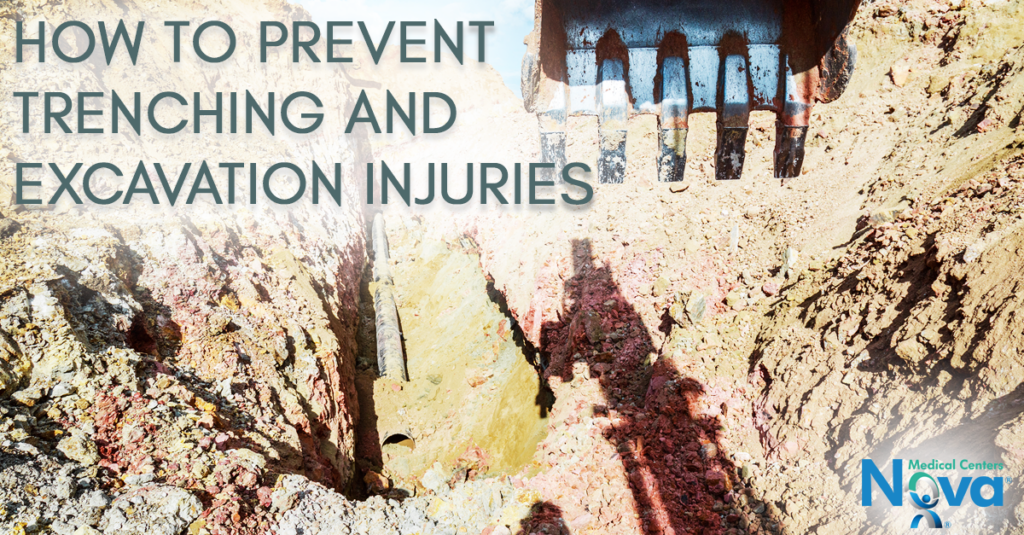
Take precautions while working in trenches to avoid injuries
Excavation and trenching are among the most hazardous construction operations. The fatality rate for excavation work alone is 112% higher than the rate for general construction. All excavations are hazardous because they are inherently unstable. If they are restricted spaces they present the additional risks of oxygen depletion, toxic fumes, and water accumulation. Here are the hazards that cause the most trenching and excavation injuries and how to prevent them.
No Protective System
Pre-job planning is vital to accident-free trenching; safety cannot be improvised as work progresses. The following concerns must be addressed by a competent person:
- Evaluate soil conditions and select appropriate protective systems.
- Construct protective systems in accordance with the standard requirements.
- Preplan; contact utilities to locate underground lines, plan for traffic control if necessary, and determine proximity to structures that could affect the choice of protective system.
- Test for low oxygen, hazardous fumes, and toxic gases.
- Provide safe access into and out of the excavation.
- Provide appropriate protections if water accumulation is a problem.
- Inspect the site daily at the start of each shift, following a rainstorm, or after any other hazard-increasing event.
Failure to Inspect Trench and Protective System
If trenches and excavations at your site are not inspected daily for evidence of possible cave-ins, hazardous atmospheres, failure of protective systems, or other unsafe conditions, you are in danger.
- Before construction begins.
- Daily before each shift.
- As needed throughout the shift.
- Following rainstorms or other hazard-increasing events (such as a vehicle or other equipment approaching the edge of an excavation).
- Inspections must be conducted by a competent person
Unsafe Soil-Pile Placements
The weight of the spoils can cause a cave-in, or spoils and equipment can roll back on top of workers, causing serious injuries or death. Provide protection by:
- Set spoils and equipment at least 2 feet back from the excavation.
- Use retaining devices, such as a trench box that will extend above the top of the trench to prevent equipment and spoils from falling back into the excavation.
- Where the site does not permit a 2-foot setback, spoils may need to be temporarily hauled to another location.
Unsafe Accessories
In some circumstances, when conditions in a trench or excavation become hazardous, survival may even depend on how quickly you can climb out.
- Provide stairways, ladders, ramps, or other safe means of egress in all trenches that are 4 feet deep or more.
- Position means of egress within 25 lateral feet of workers.
- Cleats or other means of connecting runway components must be attached in a way that would not cause tripping (e.g., to the bottom of the structure).
- Structural ramps used in place of steps must have a non-slip surface.
Trench and excavation sites provide the grounds for many potential injuries. Avoiding these hazards can be done by taking the right precautions before, during, and after work. Employers should also ensure there is a safe way to enter and exit the trench. Keep materials away from the edge of the trench. Look for standing water or atmospheric hazards. Never enter a trench unless it has been properly inspected.
At Nova Medical Centers we specialize in Occupational Health. From our outstanding services to our convenient electronic systems, we provide the best care for employees who need our help and that have been exposed to any harmful chemicals or hazardous gas on the job. With over 48 facilities across Texas, Georgia, Tennessee, and Indiana, we strive to provide the best care for America’s workforce. Feel free to contact Nova Medical Centers with any questions or comments that you may have.
Written by Andrea Araujo



